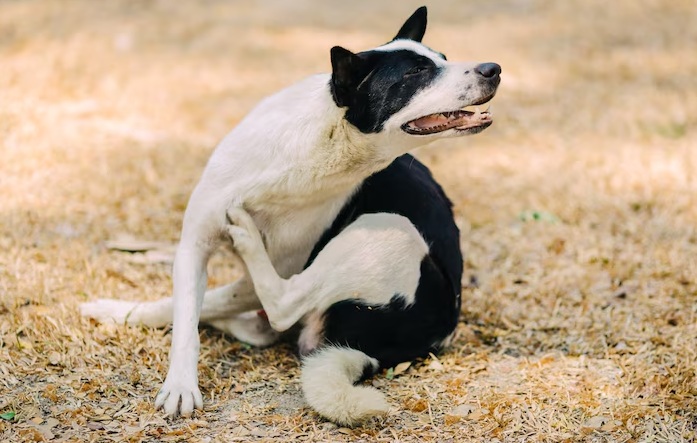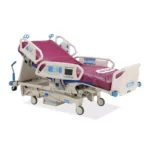Keeping our dogs healthy and flea-free is a top priority for every pet parent. But many don’t realize just how long these tiny pests can survive — and thrive — even when separated from their host. In this in-depth guide, we’ll uncover the truth about how long can dog fleas live without a host, explore powerful flea and tick treatment for dogs, and learn why pairing protection with the best multivitamin for dogs can promote stronger immunity and faster recovery.
Understanding Fleas: What You Need to Know
Fleas are external parasites that feed on the blood of their hosts — in this case, our beloved dogs. These pests are not only irritating, but they can also transmit diseases like tapeworms and cause allergic reactions.
Flea Lifecycle Overview
| Stage | Duration | Environment Required |
| Egg | 2–14 days | Warm, humid conditions |
| Larva | 5–20 days | Shaded, undisturbed places |
| Pupa (Cocoon) | Days to several months | Protected areas like carpet |
| Adult | Up to 100 days on a host | Warm host body (dog/human) |
How Long Can Dog Fleas Live Without a Host?
Let’s address the burning question: how long can dog fleas live without a host?
✅ Short Answer:
Adult fleas can live 1–2 weeks without a host, but under certain conditions, they may survive up to 100 days.
However, this depends on several factors:
- Temperature and Humidity: Fleas thrive in warm, humid environments.
- Access to Blood Meal: Without a host, fleas can’t feed, breed, or lay eggs.
- Shelter: Fleas may hide in carpets, bedding, or furniture waiting for a host.
Bottom Line: A flea infestation won’t solve itself — even if you remove your dog from the environment. Cleaning and preventive care are essential.
How Fleas Survive Off-Host: The Hidden Dangers
Even without a pet, your home can still harbor fleas:
- Cocoons (Pupae) can remain dormant for up to 5 months, hatching when they sense vibrations or heat.
- Larvae feed on organic matter and flea dirt in your home, surviving until a host arrives.
This is why understanding how long can dog fleas live without a host is crucial for every dog owner — especially those tackling recurring infestations.
Top Flea and Tick Treatment for Dogs: What’s Working in 2025?
The flea and tick treatment for dogs market has evolved, with safe, fast-acting options widely available in the USA. Here are the top methods:
🟢 1. Oral Tablets (Monthly Chews)
- Brands like Simparica Trio, NexGard, and Bravecto are vet-recommended.
- Starts killing fleas within 4–6 hours.
- Easy to administer with food.
🟢 2. Topical Treatments
- Applied directly between the dog’s shoulders.
- Brands like Frontline Plus or Advantage II.
- Effective against adult fleas, eggs, and larvae.
🟢 3. Flea Collars
- Long-lasting (up to 8 months).
- Seresto is a leading USA brand with dual action against fleas and ticks.
🟢 4. Natural Flea Repellents
- Essential oil sprays (like peppermint, rosemary, cedar oil).
- Best used as a complement to vet-approved methods.
| Treatment Type | Pros | Cons |
| Oral Chews | Fast, effective, monthly | Requires vet prescription |
| Topical | Easy to apply, water-resistant | May cause mild skin irritation |
| Collars | Long-lasting, convenient | Risk of reaction in sensitive dogs |
| Natural Sprays | Chemical-free, good for short-term use | Less effective alone |
Why Multivitamins Matter During Flea Treatment
You’ve handled the infestation — now it’s time to boost your dog’s recovery. This is where the best multivitamin for dogs comes in.
Fleas sap your dog’s strength and nutrients. Supporting your dog’s immunity and skin repair with multivitamins helps them bounce back faster.
💊 Key Nutrients to Look For:
- Omega-3s: Soothe irritated skin
- Vitamin E & C: Boost immune response
- Zinc & Biotin: Improve coat health
- Probiotics: Help digestion after oral meds
“Choosing the best multivitamin for dogs ensures your pet has the resilience to stay flea-free and healthy in the long run.”
Daily Flea Prevention Checklist
To avoid another infestation, follow this maintenance guide:
| Prevention Task | Frequency |
| Vacuum carpets and furniture | Every 2–3 days |
| Wash dog bedding in hot water | Weekly |
| Use flea preventative (vet-advised) | Monthly |
| Groom and inspect your dog | Daily |
| Treat outdoor areas | Monthly in summer |
📰 Latest USA-Based Pet Product News (2025)
According to Pet Product News, more pet parents are choosing combo health kits that include flea treatments, shampoos, and dog vitamins. These bundle options save time and reduce confusion about what’s safe and effective.
Additionally, 2025 EPA guidelines now prioritize eco-safe flea sprays, leading to rising popularity of plant-based solutions like Vet’s Best Natural Flea + Tick Spray.
🧠 Conclusion: Beat Fleas with Prevention + Nutrition
To recap:
- How long can dog fleas live without a host? Up to 2 weeks, longer if in dormant stage.
- Fleas don’t go away without action — treat your dog and your home together.
- Choose an effective flea and tick treatment for dogs to stop infestations fast.
- Don’t forget recovery — the best multivitamin for dogs can help restore your pet’s skin, coat, and immunity.
With smart prevention, regular care, and immune support, your dog can live a flea-free, happy life.
(FAQs)
How long can dog fleas live without a host indoors?
Fleas can live around 7 to 14 days without a host indoors but may survive longer in their pupae stage — up to 100 days in warm, humid homes.
What is the most effective flea and tick treatment for dogs?
Oral tablets like Simparica Trio or NexGard are among the most effective, starting to kill fleas within 4 hours and lasting up to 30 days.
Should I give my dog vitamins after flea treatment?
Yes. Using the best multivitamin for dogs supports skin healing, boosts immunity, and helps your dog recover faster from the nutrient loss caused by fleas.
Can fleas come back even after using flea treatment?
Yes, if you don’t treat the environment. Flea eggs and larvae can remain in carpets, pet beds, and furniture. Regular cleaning and treatment are key.
How can I naturally control fleas in my home?
Use food-grade diatomaceous earth, essential oil sprays (like cedar or peppermint), and frequent vacuuming. But always pair natural options with vet-approved flea treatments.
Related Reads
- Benifits Apple Cider Vinegar Plus – A Natural Boost for Your Everyday Routine
- Best Loft Conversion Layouts for Small London Homes
- Transform Your Space with Double Bed Designs and Boxes, Wooden Street
- Get the Premium Infused Pre Rolls by Top Shelf Distro USA
- What to Expect from Your Dentist in Millcroft and How to Choose Wisely



